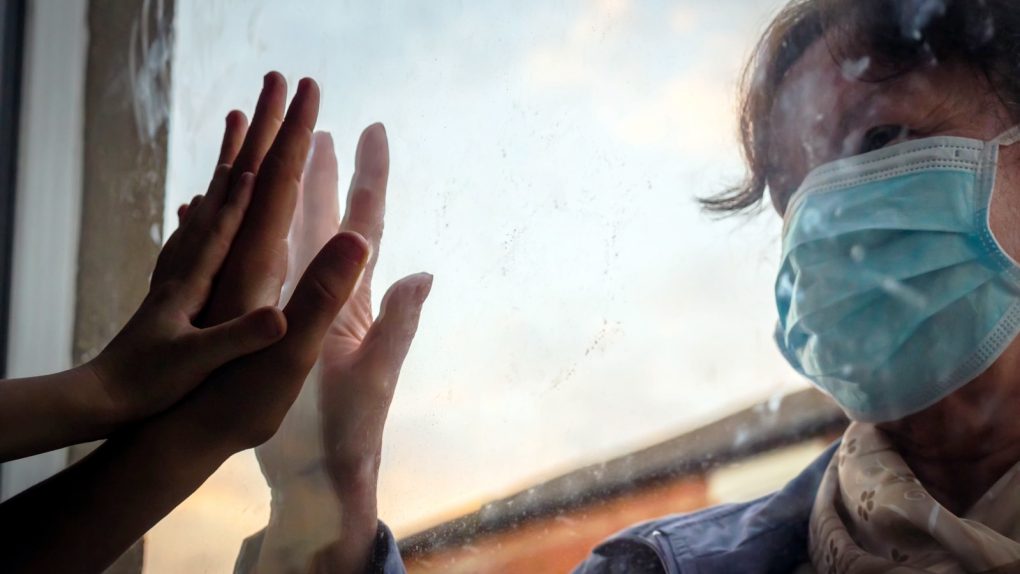- The novel coronavirus can spread via aerosols, a new study explains, whether it’s from saliva droplets ejected during talking or toilet use.
- The research shows that coronavirus aerosols traveled through sewage pipes inside a building, with traces appearing in an apartment 10 stories up.
- Proper ventilation, the use of face masks in public, and flushing the toilet with the lid down are among the recommended measures to reduce exposure to infectious coronavirus aerosols.
The novel coronavirus can spread through the air, and that shouldn’t be a secret to anyone anymore. An increasing number of studies have documented the phenomenon, making it clear that face masks should be worn at all times while indoors around other people or in crowded outdoor areas. Aerosols are different from droplets, although health officials including the World Health Organization (WHO) say droplets are the primary means by which the virus spreads. Aerosol transmission starts in the form of smaller droplets that are ejected while talking or formed as the toilet is flushed. The water evaporates and these tiny droplets are turned into aerosols that can travel much farther than the regular droplets. Recent studies have shown that aerosols carry viable virus that can multiply inside human cells in a lab, so it is definitely contagious in aerosolized form. A different study proved that aerosols from a virus like the flu could spread on dust particles, with researchers speculating that the SARS-CoV-2 virus could behave similarly.
New research on coronavirus aerosols from China shows another unexpected type of aerosol-linked event that can take place. The virus can travel through sewage pipes in multi-story buildings and appear in bathrooms located more than 10 levels above the source. Those particles aren’t necessarily infectious, but the study proves that the virus can travel through the air much easier than believed.
Researchers from China published their study of coronavirus aerosol transmission in Environment International, via Bloomberg. They looked at various scenarios where coronavirus aerosols could be observed, including a case where traces of the virus were found on the sink, faucet, and shower handle of a long-vacated apartment on the 16th story of a building. Five people living in the apartment directly under the vacated unit all had COVID-19.
The China CDC scientists went even further and performed “an on-site tracer simulation experiment,” discovering that the virus could spread through the waste pipes even farther than just one floor. Coronavirus aerosols traveled 10 stories and reached a restroom up on the 25th floor:
The possibility of aerosol transport through sewage pipe after flushing the toilet at the 15th floor restroom was confirmed by an onsite tracer simulation experiment showing that aerosols were found in the restroom of apartments on the 25th floor (two cases confirmed on Feb 1) and 27th floor (two cases were confirmed on Feb 6 and 13, respectively) of the building.
The study says that transmission via a shared elevator also can’t be excluded, but the findings are consistent with a similar outbreak in a building nearly 20 years ago during the SARS pandemic. Some 329 residents of the Amoy Gardens private housing estate in Hong Kong were infected with SARS, and 42 of them died. Aerosol transmission through faulty sewage pipes was partially to blame for the outbreak in the building. SARS is also part of the same coronavirus family as SARS-CoV-2, which causes COVID-19.
The findings in the Chinese study are particularly crucial for COVID-19 spread inside places with a large number of infected people, like hospitals. “Toilets are a daily necessity but may promote fecal-derived aerosol transmission if used improperly, particularly in hospitals,” the scientists wrote. The paper cites other studies that showed how flushing the toilet can propel virus aerosols into the air, which is also a risk factor for the virus spreading indoors. A recent study from the Korean CDC has shown that a woman may have caught the virus from sharing the same toilet as asymptomatic travelers returning from Italy in late March on a flight that was otherwise monitored by health officials to ensure the safety of the passengers.
The research proposes various methods for limiting exposure to coronavirus aerosols in hospitals and other public settings. These include the proper ventilation of rooms and public spaces, reduced usage of air conditioning, increased cleaning and disinfection of public transportation and restrooms, and flushing the toilet with the lid closed. Wearing face masks is also advised for all activities in public places, with the scientists noting that people should avoid social activities in crowded, poorly ventilated spaces that can favor the risk of aerosol transmission.








